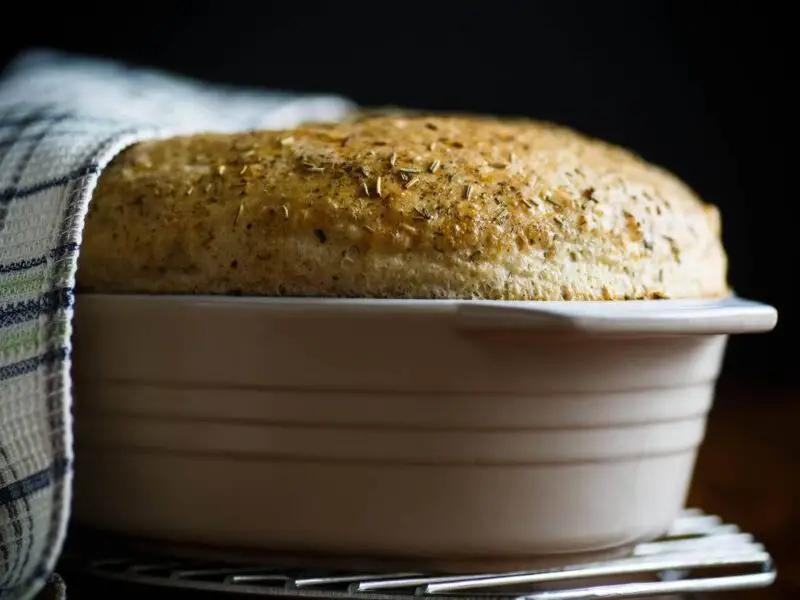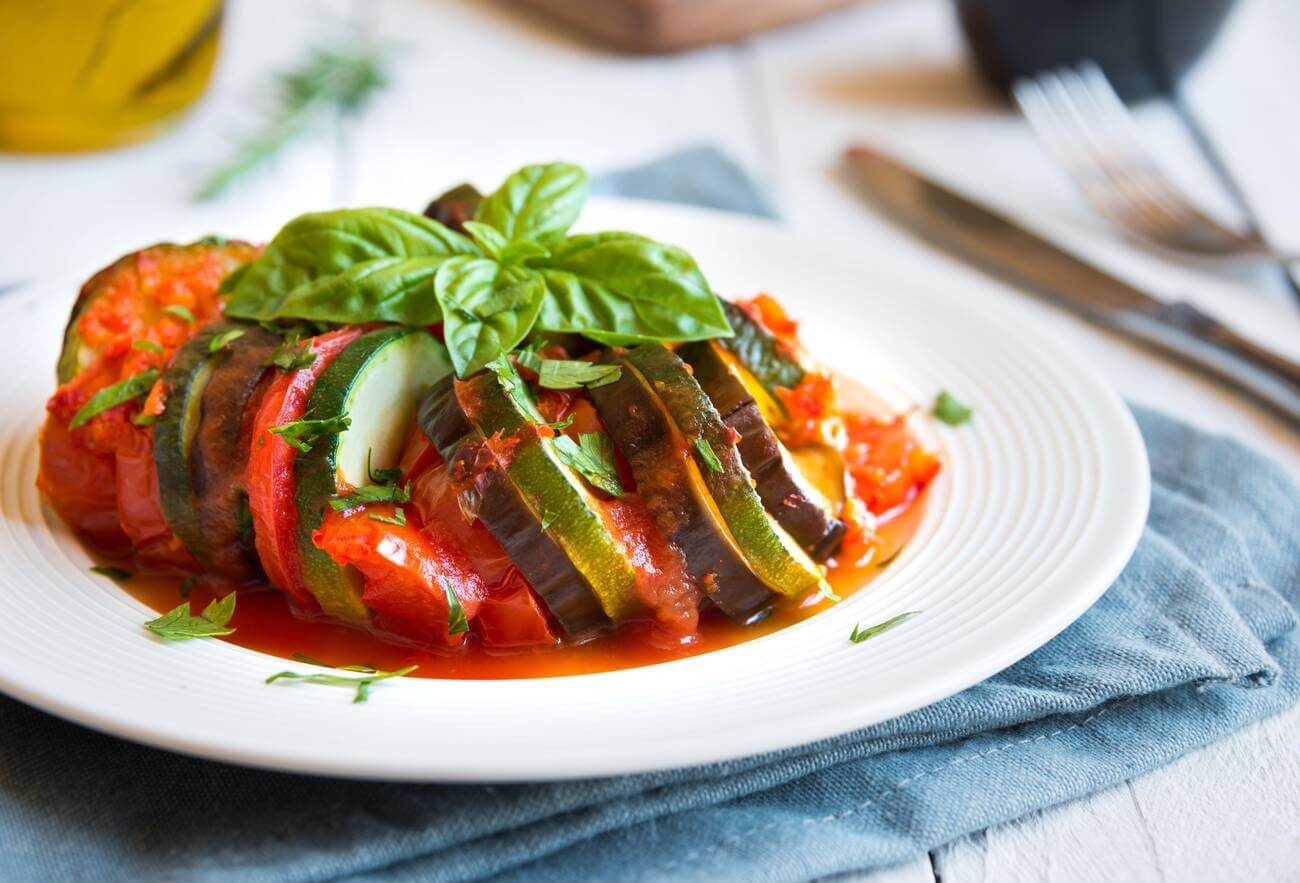Have you ever seen Sheepherder Bread at the farmers’ market or local bakery and wondered—what does it taste like? I know I’ve been there plenty of times. I spot that rustic round loaf sporting a charred crust and adorned with nuts and seeds, yet I find myself hesitating to take a bite.
Sure, the swirls and mix-ins look amazing, but breads can be tricky things. You never know if all that beauty and promise will deliver on flavor. Is it really worth plopping down six bucks to potentially be let down? These are the thoughts that have spun through my head on more occasions than I’d care to admit.
Luckily for us bread nerds, I decided to take one for the team and try Sheepherder Bread once and for all. And friends – let me tell you – it was so worth potentially being disappointed! Underneath that enticingly gnarly exterior lay flavors and textures like nothing I’ve experienced before. In this article, I’m going to unpack exactly what I tasted, so if you’ve ever wondered, “What does Sheepherder Bread taste like?” wonder no more, my friend. Your questions are about to be answered.
The Origins and History of Sheepherder Bread
The rich history and origins of sheepherder bread are as unique and multifaceted as its taste. While its exact birthplace is lost to the mist of time, most bread scholars agree this rustic loaf traces its roots back to Basque shepherds in Northern Spain and Southwest France.
It was in the 19th century that many Basques immigrated to America, bringing their treasured baking traditions with them. At that time, sheep herding was a way of life in the rural mountain valleys the Basques called home. Spending long, lonely days tending flocks in rugged terrain required foods that could stand up to the unpredictable conditions.
Enter Sheepherder Bread—a hearty, flat bread the herders could bake up in cast iron skillets overnight and then carry with them up hill and dale. Its freeform rounds were dense enough to withstand the bumps and bounces of travel, yet they still delivered plenty of sustenance. The early loaves were quite simple: flour, water, and little else. Function took precedence over flare.
Over generations, the sheepherders tweaked and perfected the recipe handed down from their Basque ancestors. Smoked wild meats and local herbs found their way into loaves baked over campfires. Wildflower honey, nuts, and dried fruits began dotting the dough for natural energy boosts. Their bread evolved while still serving its rugged purpose.
Some argue the modern skillet-baked style originated from chuckwagons traveling the Oregon and California trails in the late 1800s. Wherever the exact evolution took place, one thing is clear: the tradition of sheepherder bread became an integral part of the cowboy culture that shaped the American West. Its comforting flavors and versatility fed countless trail drives and herding excursions over the years.
While technology and changing times reduced the need for such a hearty portable bread, the legacy of Sheepherder Bread endures. Community bakeries and artisans still sell this heirloom variety, recognizing its deep cultural roots. Taking a first bite transports you straight to the past, connecting us to those hardscrabble lives on the range through an inherited taste of home.
Key Ingredients in Sheepherder Bread
Admittedly, the short ingredient list for Sheepherder Bread belies its exceptionally rich flavor profile. At its simplest, this bread calls for just flour, water, yeast, salt, and sugar. But as any good baker knows, it’s not just the components that make a great loaf—it’s how those basics interact and evolve together. Let’s break down these humble ingredients a bit further:
Flour: There’s no single variety traditionally used, giving bakers freedom to experiment. I find a blend of high-protein bread flour and whole wheat captures both structure and earthy tones. Those with a real hankering for tradition may opt for rye flour as well. Regardless, a protein content of around 12% seems best suited.
Water: Plain old H2O activates the yeasties and serves as our binding agent. I tend to prefer the softer crumb achieved using the lower end of recommended hydration levels, about 60%.
Yeast: Both instant and active dry varieties yield lovely results, so it’s truly up to preference and ingredient shelf life. Personally, I keep a longstanding starter on hand for that extradimensional complexity alone can’t bestow.
Salt: Just a teaspoon per loaf draws out additional layers of flavor throughout fermentation and baking. I also give the dough a good pinch of smoked salt near the end for an authentic campfire nuance.
Sugar: Merely a tablespoon fulfills yeast’s feeding needs while accentuating natural sweetness notes in a subtle way. I like honey or sorghum best for their deeper, caramelizing properties.
Mix-Ins: Options are endless, but some favorites include oats, cranberries, and pumpkin seeds—really any combo that adds crunch and sweet-savory contrast to each welcoming bite. Toasted nuts lend a satisfying crunch. Sometimes I’ll even stir in sweet potato or pumpkin puree for extra moistness and nutrients. Feel free to experiment until you find your ideal combination!
Preparing Sheepherder Bread
Once armed with the ideal mix of ingredients, put your knowledge to practice with a simple hands-on approach. I always find that the meditative nature of bread-making helps me unwind after a long day. There’s something so satisfying about feeling dough take shape under your touch, too.
To start, combine the liquid components in a bowl and sprinkle yeast over top. Allow 5–10 minutes for it to foam—your little microbes are awakening! Meanwhile, whisk the dry ingredients together in a separate bowl.
Once the yeast is active, pour the wet mixture into the dry and stir until a shaggy mass forms. This is when you get to indulge in stress relief through kneading. I like to do 10 minutes by hand in the bowl, incorporating small amounts of additional flour until smooth and elastic.
Next, divide the dough into rounds. Some bakers shape freeform flats while others prefer tight balls—it’s up to you! Lay on parchment-lined sheet pans with space between them for rising. Cover and set in a warm, draft-free spot for an hour or until doubled.
Now we get to the fun part: scoring tops before baking. I like slashes about 1/4 inch deep using a serrated knife or lame. This allows loaves to “blossom” beautifully as gases expand pockets within.
Finally, preheat your cast iron or Dutch oven to 450F and carefully transfer the risen loaves inside. Scored sides up is key! Bake for 30 minutes with the lid on, then another 15–20 minutes with it off for a jaw-dropping crust.
That’s all there is to traditional sheepherder bread basics. From here, the variations are endless, thanks to creative mix-ins. I hope you’ll give this rustic staple a try—you won’t regret the simple goodness!
What Does Sheepherder Bread Taste Like?
By now, you’ve got the history, ingredients, and prep process down, but what does this hearty loaf actually taste like? Well, folks, it’s a real treat for the senses, let me tell you.
The crust packs a delicious nutty punch that just begs to be savored bite by bite. It toasts up wafer thin and crispy on the edges, yet retains a hint of signature chew. As for the crumb, it’s got an intoxicating scent reminiscent of freshly baked cookies wafting from within each hollowed-out pocket.
Taking the first bite reveals a gentle tang accompanied by a subtle sweetness—almost reminiscent of sourdough but less acidic. At the same time, an underlying richness coats your palate like a buttery hug. Texturally, it dances between soft and hearty in a way few sandwich breads can mimic.
Your tastebuds are then treated to an intriguing interplay between flavors. Tiny pockets of honeyed raisins or toasted pumpkin seeds tease out with each chew. Earthy molasses notes mingle harmoniously beside a backdrop of nutty whole grains. An almost imperceptible wisp of woodsmoke emanates throughout too.
Truly, there is an art to balancing this degree of complexity on one’s palate. The bread itself is a subtle work of art meant to be experienced fully through multiple senses. So whether you treat yourself to a thick slice straight out of the oven or let it shine alongside spreads, soups, or charcuterie, close your eyes and savor this rustic bread’s beauty bite by bite.
Serving Suggestions
Let me share some ideas for enjoying this versatile bread:
Sandwiches are a classic for good reason: the wheaty crumb soaks up sauces and holds ingredients without getting soggy. I love piling on thinly sliced roast beef, melted Swiss, pepperoncini, and creamy horseradish. Another favorite combines almond butter, banana slices, and a drizzle of honey.
For soup season, nothing warms the soul like dunking chunks of this bread into a bowl of burbling stew. Whether you prefer veggie-packed chicken noodle or hearty beef barley, those final salty-sweet morsels are the best part. Pro tip: Toasting the bread first adds extra crunch and absorbs more broth.
Breakfast is where this bread really shines, in my opinion. Beyond English muffin-style egg sandwiches, try French toast made with Sheepherder Bread. Soak thick slices in a custard of eggs, milk, and cinnamon, then fry until crisp. Top with maple syrup or jam for an over-the-top start to your day.
Even on its own between meals, this bread satisfies. I’m guilty of tearing off chunks while puttering around the kitchen or lounging outside with a good book on nice days. The slices also make great edible containers for dips, spreads, and cheeses to nosh on throughout social gatherings.
No matter how creativity or simplicity guide your hands, this bread adds hearty deliciousness to any and every occasion. Versatility is just one more thing to love!
Final Words
In closing, I hope I’ve shed some light on the rich flavors, history, and versatility of sheepherder bread. From its Basque roots to modern adaptations, this variety tells stories through nourishment repeated with care across generations. The process of learning more about its origins and tastes has been a joy I’ve gladly shared. To all readers, I invite you to savor this bread for yourself – your first bites will swiftly reveal mysteries tasted will linger far longer than mysteries untasted. Keep exploring traditions with an open heart, and most of all, keep baking!



